Accelerate > Publications
Search this online library featuring the latest FAO publications, issue papers and briefs which offer up-to-date knowledge and innovative insights for SDG acceleration.

Tackling antimicrobial resistance in food and agriculture
2024
The Food and Agriculture Organization of the United Nations (FAO) leads the global response to antimicrobial resistance (AMR) in the food and agriculture sectors. Its work in response to the many challenges of AMR is currently guided by the FAO Action Plan on Antimicrobial Resistance 2021–2025. This first report on FAO’s contribution to the global response to AMR outlines a wide range of activities undertaken by FAO at global, regional and country level.

FAO and the 2030 Agenda Follow-up and Review: Guidance Note for Regional and Country Offices
2023
The Guidance Note describes the process of the preparation of the VNRs and what FAO Regional and Country Offices need to be aware and mindful of when providing support to the national partners. It covers information about the importance of the follow-up and review process for the 2030 Agenda and the SDGs, including information about the gaps in the coverage of the Voluntary National Reviews, and recommendations on strengthening VNRs to be meaningful instruments for the acceleration of the SDGs.

Sustainable livestock transformation. A vision for FAO’s work on animal production and health
2023
Within the framework of the United Nations 2030 Agenda for Sustainable Development, FAO assists Member Nations to improve sound policies, increase investments and develop good practices in the livestock sector.

FAO SDG Action: Marking the mid-way point of the 2030 Agenda
2023
As we stand at the midpoint of the 2030 Agenda, it is both a moment of reflection and an opportunity to renew our commitment to achieving the SDGs. In August 2023, the FAO Office of SDGs launched a survey, receiving over 600 responses that shared valuable insights, experiences and actions taken by FAO offices towards the achievement of the SDGs. In addition this survey, FAO project data was leveraged to present this visual representation of FAO’s contribution to the 2030 Agenda implementation.

The State of Food Security and Nutrition in the World 2023 - Urbanization, agrifood systems transformation and healthy diets across the rural–urban continuum
2023
This report provides an update on global progress towards the targets of ending hunger (SDG Target 2.1) and all forms of malnutrition (SDG Target 2.2) and estimates on the number of people who are unable to afford a healthy diet. Since its 2017 edition, this report has repeatedly highlighted that the intensification and interaction of conflict, climate extremes and economic slowdowns and downturns,...

2023 SDG Summit: FAO Key Messages
2023
The 2023 SDG Summit will serve as a pivotal event towards achieving the SDGs, as gathered Heads of State and Government are to carry out a comprehensive review of progress, respond to the impact of multiple crises, and provide high-level political guidance on transformative and accelerated actions for achieving the 2030 Agenda. FAO has developed these key messages to inform the discussions in the lead up to and during this Summit and the Political Declaration which will result from them.
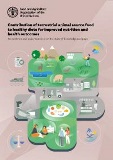
Contribution of terrestrial animal source food to healthy diets for improved nutrition and health outcomes - An evidence and policy overview on the state of knowledge and gaps
2023
FAO’s Committee on Agriculture requested a comprehensive, science- and evidence-based global assessment of the contribution of livestock to food security, sustainable food systems, nutrition and healthy diets, considering environmental, economic and social sustainability. The assessment consists of four component documents. This first component document provides a holistic analysis of the contribution of terrestrial animal source food to healthy diets for....
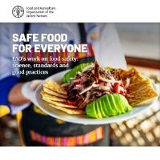
FAO's work on food safety: science, standards and good practices
2023
A life necessity, a social event, an act of love, a way of expressing ourselves: food is all of these things, as well as an important source of employment and the heartbeat of every economy. But the food chain – growing, harvesting, processing, packaging, transporting, distributing, trading, purchasing, preparing, consuming, and eventually disposing of what we consume – is a fragile sequence in which every point is fraught with risk....
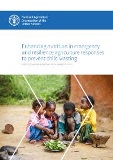
Enhancing nutrition in emergency and resilience agriculture responses to prevent child wasting - FAO's child wasting prevention action plan (2023–2024)
2023
As part of the United Nations Global Action Plan on Child Wasting, FAO requires USD 500 million to implement its action plan to prevent child wasting (2023–2024) in the 15 most-affected countries. FAO aims to reach 1 million vulnerable households with at-risk children, pregnant and lactating women and girls to prevent child wasting or to ensure that there are no relapses for children discharged after undergoing treatment.
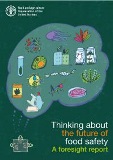
Thinking about the future of food safety -A foresight report
2022
In this publication, the FAO Food Safety Foresight programme provides an overview of the major global drivers and trends by describing their implications for food safety in particular and for agrifood systems by extrapolation. The various drivers and trends reported include climate change, changing consumer behaviour and preferences, new food sources and production systems, technological advances, microbiome, circular economy, food fraud, among others.
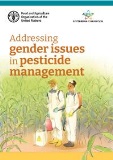
Addressing gender issues in pesticide management
2022
The Rotterdam Convention Secretariat (NSPRD) and the Gender team in ESP developed this publication with the objective of highlighting the gender-related implication of pesticide use and management, focusing on the role of women in handling hazardous pesticides in agriculture, the reasons why they are at higher risk and the health-related implications they face. The brochure provides an overview of how FAO addresses the topic ...
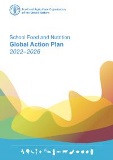
School Food and Nutrition – Global Action Plan 2022–2026
2022
The School food and nutrition - Global action plan seeks to consolidate and guide FAO’s synergistic efforts, setting out priority and concrete outputs to be achieved by 2026.
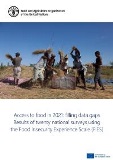
Access to food in 2021: filling data gaps - Results of twenty national surveys using the Food Insecurity Experience Scale (FIES)
2022
This report presents the results of assessments based on the food insecurity experience scale (FIES), data collected by FAO in twenty least developed countries (LDCs), landlocked developing countries (LLDCs) and Small Island Developing States (SIDS) between November 2021 and February 2022. For nine of the countries (including eight SIDS), it was the first time FIES data had been collected.
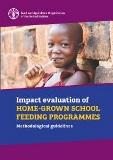
Impact evaluation of home-grown school feeding programmes: Methodological guidelines
2022
This publication seeks to support practitioners by providing methodological guidelines for conducting rigorous impact assessments of Home Grown School Feeding (HGSF) programmes. It presents an overview of the main technical issues to be addressed depending on the characteristics of the context and of the intervention itself.
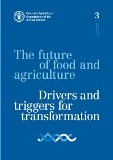
The future of food and agriculture – Drivers and triggers for transformation
2022
This report aims at inspiring strategic thinking and actions to transform agrifood systems towards a sustainable, resilient and inclusive future, by building on both previous reports in the same series as well as on a comprehensive corporate strategic foresight exercise that also nurtured FAO Strategic Framework 2022–31. It analyses major drivers of agrifood systems and explores how their trends could determine alternative futures of agrifood, socioeconomic and environmental systems.

The State of Food Security and Nutrition in the World 2022 - Repurposing food and agricultural policies to make healthy diets more affordable
2022
This year’s report should dispel any lingering doubts that the world is moving backwards in its efforts to end hunger, food insecurity and malnutrition in all its forms. We are now only eight years away from 2030, but the distance to reach many of the SDG 2 targets is growing wider each year. There are indeed efforts to make progress towards SDG 2, yet they are proving insufficient in the face of a more challenging and uncertain context.

Achieving Antimicrobial Stewardship on the Global Scale: Challenges and Opportunities
2022
Antimicrobial resistance (AMR) has been clearly identified as a major global health challenge. It is a leading cause of human deaths and also has a toll on animals, plants, and the environment. Despite the considerable socio-economic impacts, the level of awareness of the problem remains woefully inadequate, and antimicrobials are not generally recognized as a global common good, one that everyone has a role and responsibility to conserve.

Managing animal health emergencies with a One Health approach
2022
The concept of One Health is woven into the fabric of the Food and Agriculture Organization of the United Nations (FAO) Emergency Management Centre for Animal Health (EMC-AH). EMC-AH was created in 2006 as a global response platform to the outbreak of H5N1, a disease which affects both animals and humans. Since its establishment, EMC-AH continues to carry out its activities in close collaboration with One Health partners.

Maximizing nutrition in crop production using a food systems approach - An evidence-based literature review
2021
This literature review is one of a series of four sector-specific reviews aimed at informing the development of guidance notes for the integration of nutrition across the crops, fisheries, and aquaculture, forestry, and livestock sectors in 12 sub-Saharan African countries. The present literature review focuses on mainstreaming nutrition in the crops sector, using a food systems approach.
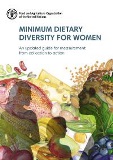
Minimum dietary diversity for women. An updated guide to measurement - from collection to action
2021
This publication is an update to the 2016 FAO/FHI 360 joint publication MDD-W: A Guide to Measurement. It includes guidance on the most accurate and valid methodologies on collecting, analyzing, interpreting, and presenting data on women’s dietary diversity, for use in research, impact assessment and large-scale, health and nutrition surveys such as the Demographic Health Survey (DHS), to generate nationally representative data, that are comparable over time and across countries.
Browse by SDG
- SDG1: No Poverty
- SDG2: Zero Hunger
- SDG3: Good Health & Well-being
- SDG4: Quality Education
- SDG5: Gender Equality
- SDG6: Clean Water & Sanitation
- SDG7: Affordable and Clean Energy
- SDG8: Decent Work and Economic Growth
- SDG9: Industry, Innovation and Infrastructure
- SDG10: Reduced Inequalities
- SDG11: Sustainable Cities and Communities
- SDG12: Responsible Consumption and Production
- SDG13: Climate Action
- SDG14: Life Below Water
- SDG15: Life on Land
- SDG16: Peace, Justice and Strong Institutions
- SDG17: Partnerships for the Goals
Browse by Better
Browse by Priority Area
- Innovation for Sustainable Agriculture Production
- Blue Transformation
- One Health
- Small-Scale Producers' Equitable Access to Resources
- Digital Agriculture
- Healthy Diets for All
- Nutrition for the Most Vulnerable
- Safe Food for Everyone
- Reducing Food Loss and Waste
- Transparent Markets and Trade
- Climate Change Mitigating and Adapted Agrifood Systems
- Bioeconomy for Sustainable Food and Agriculture
- Biodiversity and Ecosystem Services for Food and Agriculture
- Achieving Sustainable Urban Food Systems
- Gender Equality and Rural Women's Empowerment
- Inclusive Rural Transformation
- Agriculture and Food Emergencies
- Resilient Agrifood Systems
- Hand-in-Hand Initiative
- Scaling up Investment
